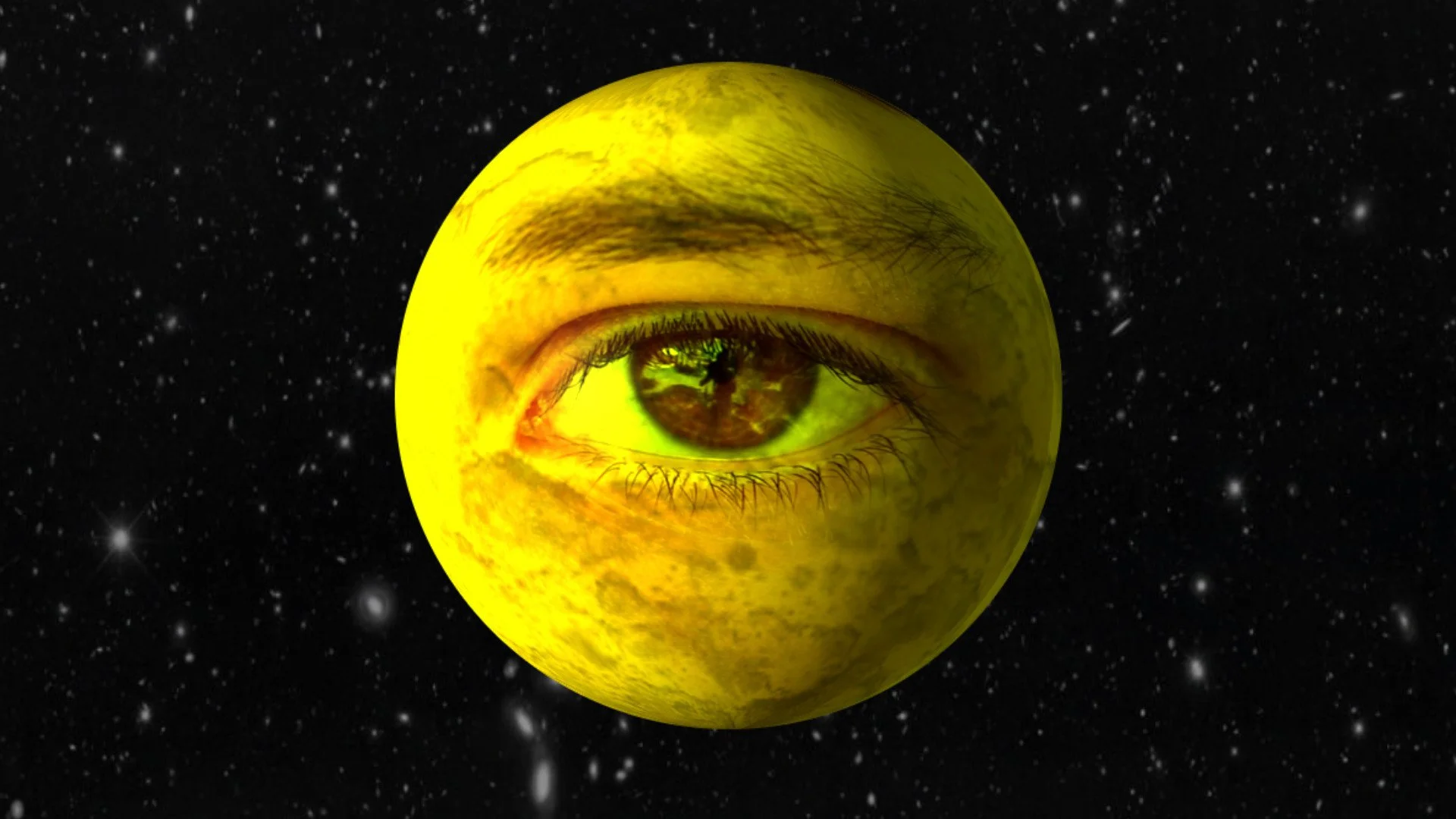Llygad y Lleuad (Eye of The Moon) - Jo Lawrence
A film by Jo Lawrence based on Caradog Prichard’s novel, Un Nos Ola Leuad (One Moonlit Night). The soundtrack was performed by a live in Pontio Arts and Innovation Centre. Featured were orchestral players from the Bangor New Music Ensemble and a Welsh speaking choir from Aelwyd JMJ. The music was conducted by Tomasz C. Edwards.
Caradog Prichard
Prichard was born and grew up in the Gwynedd slate-quarrying town of Bethesda, in north-west Wales. His father died when he was a baby, and his mother suffered from mental illness.
His novel Un Nos Ola Leuad (One Moonlit Night) explores life in Bethesda from the point of view of a child exploring themes such as religion, death and duality.
Jo Lawrence
Jo Lawrence is a London based director specialising in animation and mixed media. She is well known for works such as ‘Glow’ (commissioned by Channel 4 in 2007). Her other works include ‘Glover’, ‘Pavementopera’ and ‘Datacosm’.
The soundtrack
The musical content depicts pivotal themes in Prichard’s novel and mirrors the onscreen material.
The opening sequence featuring a planet slowly zooming in for roughly 5 minutes is complimented by a gradual introduction of instrumental parts. The first to enter is the celesta which performs a rhythmic motif that will be repeated throughout the piece. This instrument was chosen for its timbral resemblance to toy pianos or miniature xylophones. Because of this there is a strong allusion to childhood.
As the other instruments enter, they gradually form a chord consisting of perfect 5ths (an interval one considered sacred because of its powerful consonance). This creates an ambience that paves the way for a rising harp part, this instrument becomes very important in the composition and communicates a distinct Welsh theme. After all the harp is considered the national instrument of Wales. Together with the background ambience, the music depicts the beauty of the dramatic Welsh scenery.
There are many points in the book where the protagonist’s childhood is tainted. This is mirrored by a sudden break to more dissonant writing and the uses of harsh sounding instrumental techniques. These include the scratch-tones produced by the string players - this is when the bow is placed so hard on the strings that it produces a ‘tearing’ noise.
Towards the end of the opening, Koshi Aqua wind chimes are introduced evoking water and mysticism. This predicates the gong which marks the title sequence and the beginning film.
The symmetrical scenery beings to zoom in creating a hypnotic feeling as the viewer draws closer to the water. In the soundtrack, the melodic writing features symmetrical intervals that aid the visual effects. Extended repetition also evokes a transcendental state to contribute the hypnotic atmosphere.
Once the watery destination is reached, the Queen of the Lake appears. She is a mystical being that features in the book during poetic interludes. The Welsh choir enter when she is onscreen - this is the only time they are used. Their libretto is taken directly from the book and translates to:
I am the Queen of the Black Lake, rejected by the Beautiful One.
My kingdom is the grievous waters that lie beyond the ultimate sorrow; whose bitterness did sweeten the waters of Marah.
I am learned in the chemistry of tears; I assembled them in the cauldron of the centuries, then dissected and reduced them to their elements.
Eternal and fleeting, sad and joyful, momentous and without significance was the task; as like the seed in the womb, I hurried from person to person in my quest.
While exiting the watery scenery, there is a reduction in musical texture mimicking the effect of hearing clearly after being underwater.
Beautiful overlapping melodies in the string parts relate thematically to the opening section where the beauty of Wales was depicted. Here they highlight the revealing of the moon.
Shortly, a section commences where names of the characters from the book are read out in Welsh by voice actors. They possess an ethereal quality and sync with each house lighting up.
The section predominantly consists of questions and answers. These become increasingly dissonant with the reveal of Jini floating to heaven.
When the character of Mam is revealed there is a musical change. Mam was the protagonist’s mother who was sent to a psychiatric asylum. The sudden musical break shows a change in perspective as all security is lost.
The end of the film features a solo harp playing a mournful piece based on the opening celesta motif. This represents a collapse of childhood bliss and marks the end of the film.







